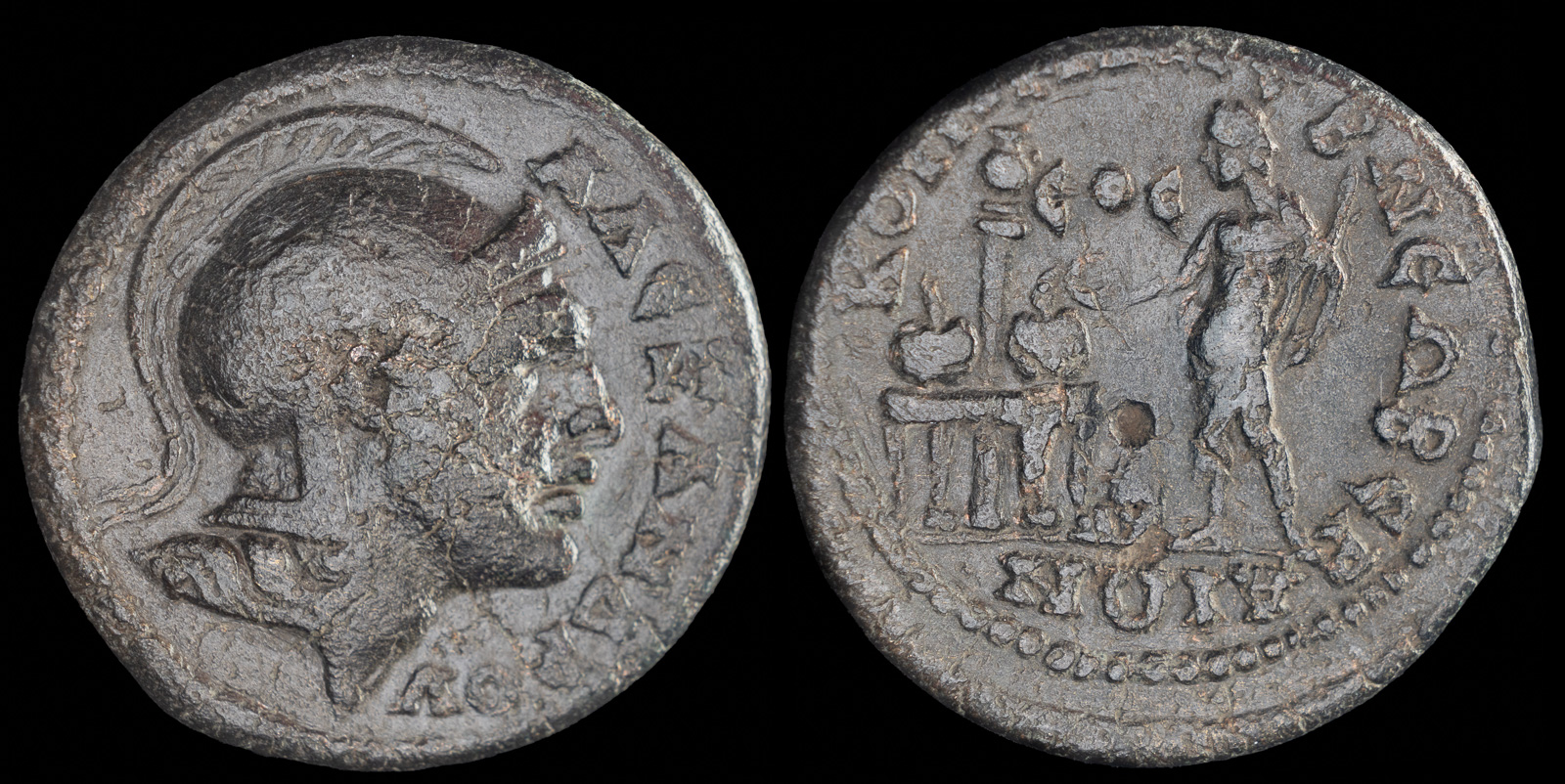
Macedon, Koinon of Macedon
Dated year 275 of the Actian Era 244 CE
Æ 27mm, 11.6g
Games issue. Beroea mint
ΑΛƐΞΑΝΔΡΟΥ Head of Alexander the Great r., wearing crested helmet.
R/ ΚΟΙΝ ΜΑΚƐ Β ΝƐΩ ΒƐΡΑΙΩΝ Emperor standing l., holding scepter, standing l., extending hand to prize table surmounted by two prize crowns, each containing palm; behind, column surmounted by urn; ЄOC (date) across field
AMNG III 864; SNG Copenhagen 134
ΚΟΙΝ ΜΑΚƐ – Koinon of Macedon. This was a federation of Macedonian cities designed to champion the glorious history of Macedon, but carefully woven into allegiance to the Roman Empire. While the Koinon had existed for some time (I believe it was started by Claudius) prior to this coin, beginning under Severus Alexander and Elagabalus numerous coins were issued without the emperor’s portrait, but with a nod to this past history in a likely attempt to distract the people from all the problems.
Β ΝƐΩ – The ‘neo’ is short for ‘neokoros’ and was a major honor for cities during Roman times. The emperor would provide this designation to his favorite cities, and it was often included on their coinage. Yet Beroea was extra special, because the ‘B’ means ‘two’ and thus this mentions their double neocorate. The first was granted by Nerva, and the second was given by Elagabalus. That one was rescinded when the memory of Elagabalus was damned, but then apparently returned by Severus Alexander in 231 CE.
ΒƐΡΑΙΩΝ – Beroea, where this coin is presumed to have been minted
ЄOC – (to the left of the emperor) This is 275 of the Actian era, or 244 CE. Dates on Koinon of Macedon coins are relatively rare, but the presence of it on this coin provides some crucial information.
Given the date, I believe this was minted under Philip I. In February 244, Gordian III was killed in battle against Shapur I of Persia. The army and rule was taken by Philip I, who signed what many considered a shameful peace treat with the Persians, then headed back to Rome.
I could find no specific itinerary for Philip I on his way home, other than he is reported to have arrived back in Rome in the late summer of 244 CE. His path would have certainly put him through Macedon, and the rare reverse of this coin suggests that he was present at the Olympia Alexandreia.
As far as I can tell, we don’t know much about the Olympia Alexandreia, other than they appear to have been held yearly, were a big deal in Greece, and many of the Koinon coins referred to them. Could Philip I have stopped at Beroea and handed out the prizes, perhaps after drinking (according to the reverse) quite a few beers? It doesn’t seem far fetched to me.
It’s possible that Philip’s last memory of Beroea, though, wasn’t a happy one. Ancient writers disagreed on Philip’s fate. Some state he was killed in battle against Decius at Verona in 249, while others state he was assassinated at Beroea. Regardless, if he stopped to hand out prizes in 244, I’m sure that was a happier day.